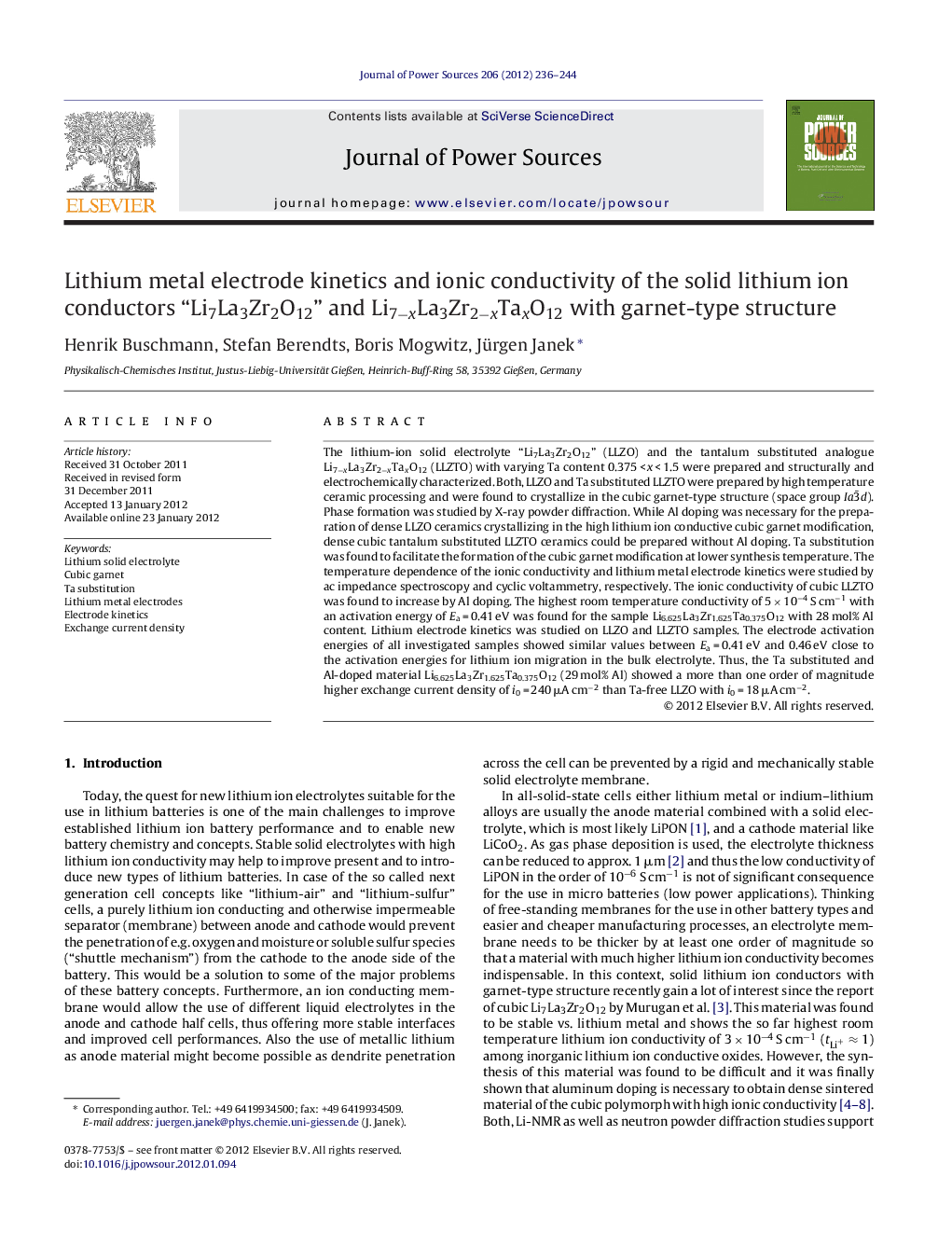| Article ID | Journal | Published Year | Pages | File Type |
|---|---|---|---|---|
| 1293081 | Journal of Power Sources | 2012 | 9 Pages |
The lithium-ion solid electrolyte “Li7La3Zr2O12” (LLZO) and the tantalum substituted analogue Li7−xLa3Zr2−xTaxO12 (LLZTO) with varying Ta content 0.375 < x < 1.5 were prepared and structurally and electrochemically characterized. Both, LLZO and Ta substituted LLZTO were prepared by high temperature ceramic processing and were found to crystallize in the cubic garnet-type structure (space group Ia3¯d). Phase formation was studied by X-ray powder diffraction. While Al doping was necessary for the preparation of dense LLZO ceramics crystallizing in the high lithium ion conductive cubic garnet modification, dense cubic tantalum substituted LLZTO ceramics could be prepared without Al doping. Ta substitution was found to facilitate the formation of the cubic garnet modification at lower synthesis temperature. The temperature dependence of the ionic conductivity and lithium metal electrode kinetics were studied by ac impedance spectroscopy and cyclic voltammetry, respectively. The ionic conductivity of cubic LLZTO was found to increase by Al doping. The highest room temperature conductivity of 5 × 10−4 S cm−1 with an activation energy of Ea = 0.41 eV was found for the sample Li6.625La3Zr1.625Ta0.375O12 with 28 mol% Al content. Lithium electrode kinetics was studied on LLZO and LLZTO samples. The electrode activation energies of all investigated samples showed similar values between Ea = 0.41 eV and 0.46 eV close to the activation energies for lithium ion migration in the bulk electrolyte. Thus, the Ta substituted and Al-doped material Li6.625La3Zr1.625Ta0.375O12 (29 mol% Al) showed a more than one order of magnitude higher exchange current density of i0 = 240 μA cm−2 than Ta-free LLZO with i0 = 18 μA cm−2.
► Use of Ta substitution for the synthesis of new solid Li electrolyte Li7−xLa3Zr2−xTaxO12. ► Structure investigations of the new materials by XRD and Rietveld refinement. ► Temperature dependent conductivity measurements and determination of activation energies. ► Study of different three electrode setups by finite element method simulations. ► Investigation of lithium metal electrode kinetics and exchange current densities.
